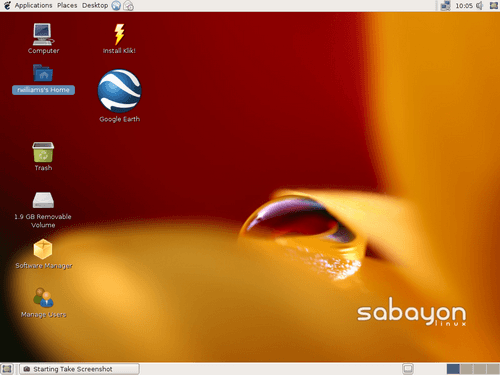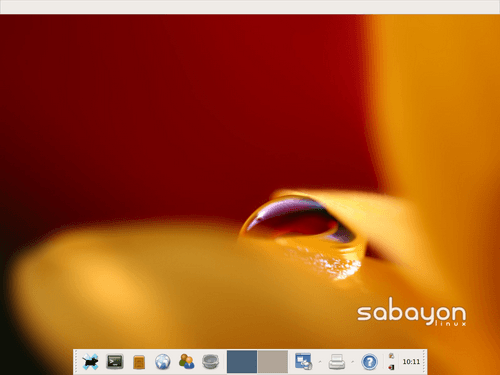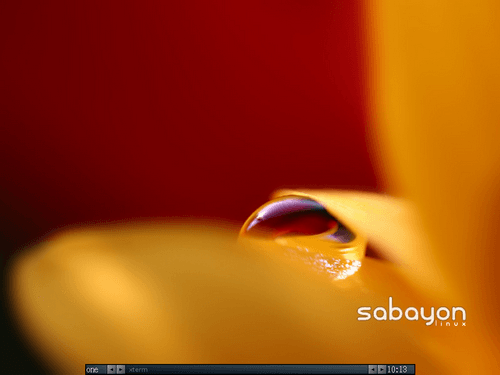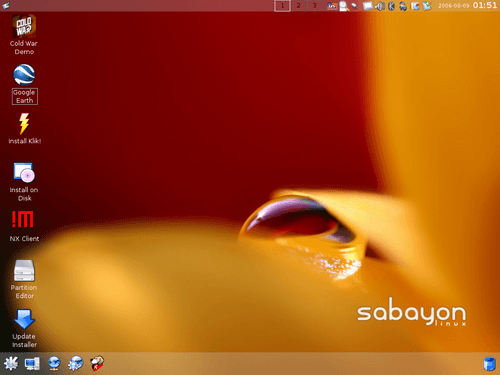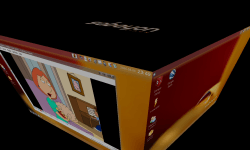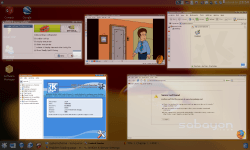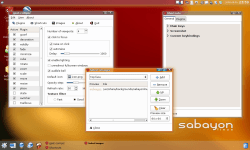- Qualcomm Launches Snapdragon 4 Gen 2 Mobile Platform
- AMD Launches Ryzen PRO 7000 Series Mobile & Desktop Platform
- Intel Launches Sleek Single-Slot Arc Pro A60 Workstation Graphics Card
- NVIDIA Announces Latest Ada Lovelace Additions: GeForce RTX 4060 Ti & RTX 4060
- Maxon Redshift With AMD Radeon GPU Rendering Support Now Available
Sabayon Linux RC2
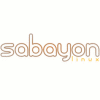
The distro formally known as RR4 is soon to be released, and we have taken a hard first look at what’s being offered. Based on Gentoo, Sabayon already has a solid base. Add superb Live DVD functionality and a complete installer, this is one distro worth watching.
Page 3 – Final Thoughts
I won’t get much into the post installation, because it’s not far different than the Live DVD. For those interested, here is what the GNOME, Xfce and Fluxbox environments look like on Sabayon.
After taking an initial look at Sabayon, I have mixed feelings. Though, I feel more joy when using it than anything negative. One reason this distro may stand out above others is because it takes a difficult base distro, and opens its arms for new users who want to experiment. When it’s all said and done, you will have a full functional Gentoo machine after the installation, topped off with a Sabayon coat of paint. What a great looking coat of paint it is.
One of the main gripes I have had with this specific version, is the mass amounts of installed packages. There are so many to wade through, that I wouldn’t dare try pulling off an emerge -uD world without going to sleep shortly after. However, with each SL release of Sabayon, a miniEdition will coincide, which will suit people like me who would rather pick and choose what apps we want manually.
What may impress me most about Sabayon is the great hardware detection. If you have a piece of hardware hooked up to your PC, chances are good that Sabayon will see it. The only piece of hardware I had trouble with was my USB WiFi adapter, which was detected but wouldn’t connect to the network. As I mentioned earlier, I blame this on the subpar router, not Sabayon.
Since this based on Gentoo, all of the benefits of that distro are here. emerge is the ‘apt-get’ here, and works well especially after you learn the ins and outs. The Portage software repository has countless applications… most you need will be there. It’s also regularly updated, and programs -need- to be stable before users are able to download it with ease. This helps prevent system instabilities down the road.
Similar to other distros, you can update all the packages on your system with a simple command: emerge -uD world. One benefit that some enjoy is the fact that if a program is open source, emerge will download the source code and compile it. This ‘optimizes’ that application for your system. I should mention though, that the quick installation of Sabayon is due to binary packages being used on the DVD. Further updating the applications, such as using the -uD world, will then compile them.
Another benefit Gentoo has is the genkernel tool. Essentially, this allows you to very easily upgrade your kernel with a simple command. Though power users will want to manually install and configure their kernel, this is a great secondary option.
Gentoo specific benefits aside, this is a great distro on it’s own even if you never touch the perks of Gentoo. For the casual user, it includes everything you will need from a base install… trust me on this. If you later want to upgrade/install new packages but don’t want to deal with emerge, a Kuroo icon is waiting for you on your desktop. It allows you the power of emerge, but in a GUI frontend.
For power users, Sabayon is one of those distros that comes packed, but holds back no control. After installation, you can do whatever you please… upgrade your kernel or packages, hack your grub.conf, uninstall programs you don’t need, change the theme to mimic a regular KDE and much more. The primary difference here is, that it makes the installation far quicker than a regular Gentoo distro.
If you are a fan of XGL and are a regular Gentoo user, you may understand the hassle of trying to get it to function. Sabayon is actually XGL capable from the start, but you need to activate it manually on boot: gentoo xgl res=1280×1024 refresh=75. I didn’t touch up much on XGL in this article though, as it’s not really the focus of this distro. It’s there for the taking, if you are interested. Here are some quick screenies to tide you over:
In short, you would be doing yourself a favor by giving Sabayon a try when it’s released later this month. Even if you don’t plan on using it as your primary installed distro, you may enjoy using it simply as a Live DVD, since it includes everything you will need. I look forward to seeing how this one progresses in the next few weeks, even few months. Kudos to Fabio and his crew for putting out a solid Gentoo based distro, that’s unique in it’s own right.
- Official Website
- DistroWatch Sabayon Page
- Tigaer-Design / Tigaer dA (Wallpaper (C) Tigaer Design)
If you have a comment you wish to make on this review, feel free to head on into our forums! There is no need to register in order to reply to such threads.
Support our efforts! With ad revenue at an all-time low for written websites, we're relying more than ever on reader support to help us continue putting so much effort into this type of content. You can support us by becoming a Patron, or by using our Amazon shopping affiliate links listed through our articles. Thanks for your support!




